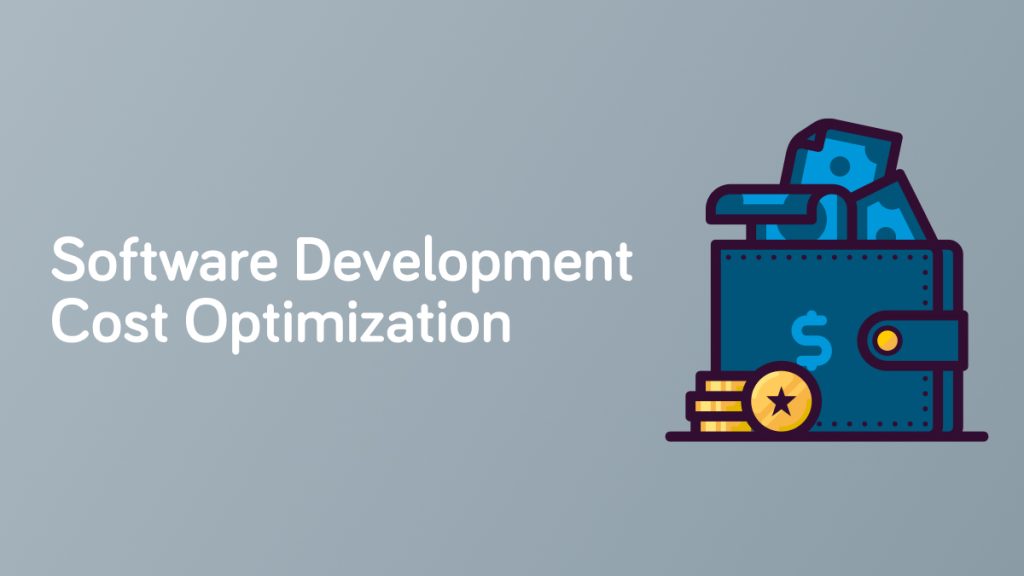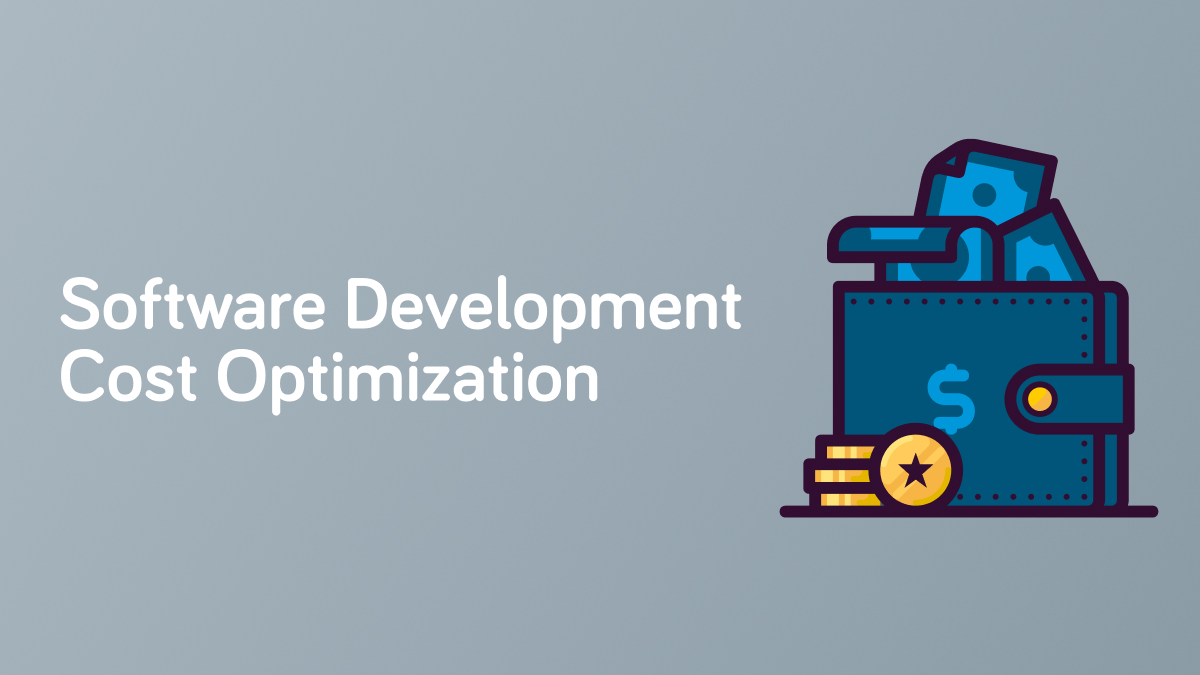Software development is a key driver of innovation across industries in the ever-evolving technological landscape. Companies are increasingly dependent on bespoke software solutions to help streamline their processes, improve user experience, and gain competitive advantage. As such, it is hard for businesses, particularly start-ups, to determine how much custom software development costs.
According to studies, the 2021 global market for custom software development was valued at $24 billion. It is projected to grow by 22.3% annually till 2030.
A complete guide to understanding the Cost Drivers in Software Development and Different Types of Software Development Costs
What Are Software Development Costs?
Software development costs encompass various expenses associated with creating, maintaining, and updating computer programs or applications. These costs typically include salaries for developers and other personnel, expenses for software tools and licenses, infrastructure costs such as servers and cloud services, as well as expenses for testing, debugging, and quality assurance. Additionally, costs may arise from project management, documentation, and ongoing support and maintenance. Overall, software development costs represent the financial investment required to design, build, and sustain software solutions to meet specific business or user needs.
How Much Does IT Software Development Costs?
The cost of IT software development costs varies widely depending on factors such as project scope, complexity, technologies involved, and team size. Small projects might cost a few thousand dollars, while large-scale enterprise solutions can run into millions. For example, developing a basic mobile app with limited functionality could range from $10,000 to $50,000, whereas building a comprehensive enterprise-level software system could cost upwards of $1 million or more. These software development costs typically cover expenses such as developer salaries, software tools and licenses, infrastructure, testing, and ongoing maintenance.
Understanding Variables : The Fundamental Factors
Several variables influence the software development costs making it important that each one be dissected right from the time they have been involved in setting up this item. The following basic ingredients play a vital role in determining the total expenditure:
1. Scope and Complexity of the Project
The complexity and scope of a software project significantly impact the software development costs, Thus, a simple web application, which may only require basic functionality and straightforward user interfaces, will not cost as much as a complex enterprise-level software solution with intricate features. Such as advanced data analytics, extensive customization options, integration with multiple systems, and scalability to support thousands or even millions of users simultaneously. Additionally, factors like the need for robust security measures, compliance with industry regulations, and the level of technical expertise required for implementation further contribute to the overall complexity and subsequently influence the project’s cost.
Moreover, the involvement of various stakeholders, including users, developers, project managers, and quality assurance teams, adds layers of complexity as communication and coordination become crucial to ensure that everyone is aligned with the project objectives and requirements. Thus, understanding the scope and complexity of a software project is essential for accurately estimating its costs and planning resources effectively.
2. Composition Of The Development Team
The composition of the development team is a critical factor influencing software development costs and project outcomes. The number and quality of developers, designers, and other team members play a significant role in determining the efficiency and effectiveness of the development process. Hiring professionals with a high level of expertise may indeed incur higher software development costs initially, but their knowledge and skills can significantly accelerate the project timeline and enhance the quality of the final product. Moreover, the synergy among team members, including their ability to collaborate effectively and leverage each other’s strengths, can streamline the development process and mitigate risks, thereby potentially reducing overall software development costs in the long run.
Additionally, having a diverse team with a range of experiences and perspectives can foster innovation and creativity, leading to more robust solutions that better meet user needs and market demands. Therefore, while the upfront investment in assembling a skilled development team may seem daunting, it is often a worthwhile investment that can ultimately yield substantial returns by delivering a superior product within budget and schedule constraints.
3. Technology Stack
The selection of a technology stack is a pivotal decision in software development. It profoundly impacts both the development process and software development costs. Each element of the stack, including programming languages, frameworks, and tools, contributes to the overall efficiency, scalability, and maintainability of the final product. While cutting-edge technologies may promise superior performance and innovative features, they often come with higher upfront costs. This is due to licensing fees, specialized expertise required for implementation, and potential compatibility issues with existing systems.
On the other hand, opting for more established technologies may lower initial development costs but could result in trade-offs in terms of flexibility, scalability, or future-proofing. Therefore, striking the right balance between adopting state-of-the-art solutions and considering the long-term implications on software development costs is crucial. To maximize the value proposition of the project. By carefully evaluating the trade-offs between innovation and affordability, organizations can make informed decisions. They can optimize both the development process and software development costs, ensuring successful delivery within budgetary constraints.
Hidden Software Development Costs
However obvious these fundamental factors seem; there are other hidden costs stakeholders should look into:
1. Maintenance and Updates
Maintenance and updates are integral aspects of software ownership that extend beyond the initial design phase. As software evolves and adapts to changing user needs and technological advancements, regular maintenance becomes essential to ensure its reliability, security, and performance. This ongoing process involves not only addressing bugs and vulnerabilities but also implementing security patches and enhancements to improve functionality and user experience. While these updates add value over time by enhancing the software’s capabilities and extending its lifespan, they also contribute to the overall software development costs incurred by the organization. Additionally, factors such as the complexity of the software architecture, the frequency of updates, and the availability of skilled personnel to perform maintenance tasks can further influence long-term ownership costs. Therefore, organizations must budget and plan accordingly for maintenance and updates to sustain the software’s effectiveness and mitigate the risk of downtime or security breaches.
2. Integration with Existing Systems
Integrating the new software with existing systems within an organization is a critical step that can present unforeseen challenges and complexities. Compatibility issues may arise when attempting to connect the new software with legacy systems or third-party applications, requiring thorough testing and potentially necessitating additional customization to ensure seamless interoperability. These challenges can lead to delays in implementation and increased software development costs as resources are allocated toward troubleshooting and resolving compatibility issues. Moreover, the need for customizations to adapt the new software to the unique requirements of the organization further contributes to the overall software development costs. Therefore, organizations must carefully assess their existing infrastructure. They also consider the potential integration challenges when planning and budgeting for software development projects. Top of Form
3. Scalability
Scalability is a crucial consideration in software development, especially for businesses experiencing growth and expansion. As the user base and operational requirements evolve, software must be able to scale seamlessly to accommodate increased demand and additional functionalities. Failure to plan for scalability from the outset can lead to significant software development costs down the line. By investing in scalable architecture and infrastructure early in the development process, organizations can future-proof their software and avoid the need for costly redevelopment efforts as the business grows. Additionally, scalable software solutions enable businesses to adapt quickly to changing market conditions and seize new opportunities without being hindered by technological limitations. Top of Form
Budgeting Tools
Industry Benchmarks
Understanding industry benchmarks is crucial for establishing realistic expectations. Different types of software projects, such as mobile apps, web applications, or enterprise solutions, come with their own set of benchmarks. Researching industry standards helps to gauge whether a project estimate aligns with prevailing market rates.
Budgeting Wisely
a) Fixed Price vs Time and Material
To budget for software development wisely one has to choose between fixed price model and time & material model as we do not know what comes next which is important in decision making about this process option so one considers predictability on one side but also flexibility of change on the other leading to variations in charges anticipated.
b) Building Contingencies
In any case it is almost impossible that all will go well thus some hiccups and changes should be expected when developing a program. By having contingency funds; risks are reduced while ensuring that even under unexpected circumstances projects do not exceed their budgets.
6 Effective Ways to Reduce Software Development Costs
Software development faces the eternal challenge of striking a balance between quality and cost. Although it is wise to reduce costs by cutting corners, the overall quality of the product would be compromised. The situation could be resolved by employing agile development methodologies and continuous testing.
In today’s competitive landscape, efficient cost management is crucial for the success of any software development project. By implementing strategic approaches, businesses can significantly reduce their software development costs without compromising on quality. Here are six actionable ways to achieve it:
Leverage Open Source Technologies:
Incorporating open-source technologies allows companies to access a wide array of resources without the hefty price tag associated with proprietary software. Developers can utilize open-source frameworks, libraries, and tools to build robust applications at a fraction of the cost.
Embrace Agile Methodologies:
Adopting Agile methodologies such as Scrum or Kanban promotes iterative development and constant collaboration between teams. This approach minimizes rework, accelerates time-to-market, and ultimately reduces overall development costs by ensuring the timely delivery of high-quality software.
Outsource Non-Core Tasks:
Identify non-core tasks within the development process that can be outsourced to third-party vendors or offshore teams. Outsourcing tasks like testing, documentation, or UI/UX design can yield significant cost savings while allowing in-house teams to focus on core functionalities.
Implement Automated Testing:
Investing in automated testing frameworks streamlines the testing process, reduces manual effort, and minimizes the likelihood of bugs and defects. By detecting and fixing issues early in the development cycle, businesses can avoid costly rework and ensure a smoother software deployment.
Utilize Cloud Infrastructure:
Leveraging cloud infrastructure services such as AWS, Azure, or Google Cloud eliminates the need for expensive hardware procurement and maintenance. Cloud platforms offer scalable computing resources on a pay-as-you-go basis, enabling businesses to optimize their infrastructure costs based on actual usage.
Continuous Monitoring and Optimization:
Implementing continuous monitoring tools allows teams to track resource utilization, identify bottlenecks, and optimize performance throughout the software development lifecycle. By continuously refining processes and eliminating inefficiencies, organizations can further reduce costs and enhance overall productivity.
Overall, reducing software development costs requires a proactive approach that encompasses both strategic decision-making and efficient execution. By leveraging these strategies businesses can achieve significant cost savings while delivering high-quality software products to market.
Conclusion
Finally, understanding software development costs needs a comprehensive perception of observable as well as hidden aspects influencing them. Project scope; team composition; maintenance; and scalability among others contribute towards final financial investment figures. By adopting strategic approaches, embracing industry benchmarks as well and learning from both successful operations alongside failures companies can have confidence in traversing this complex arena called the software development cost landscape





